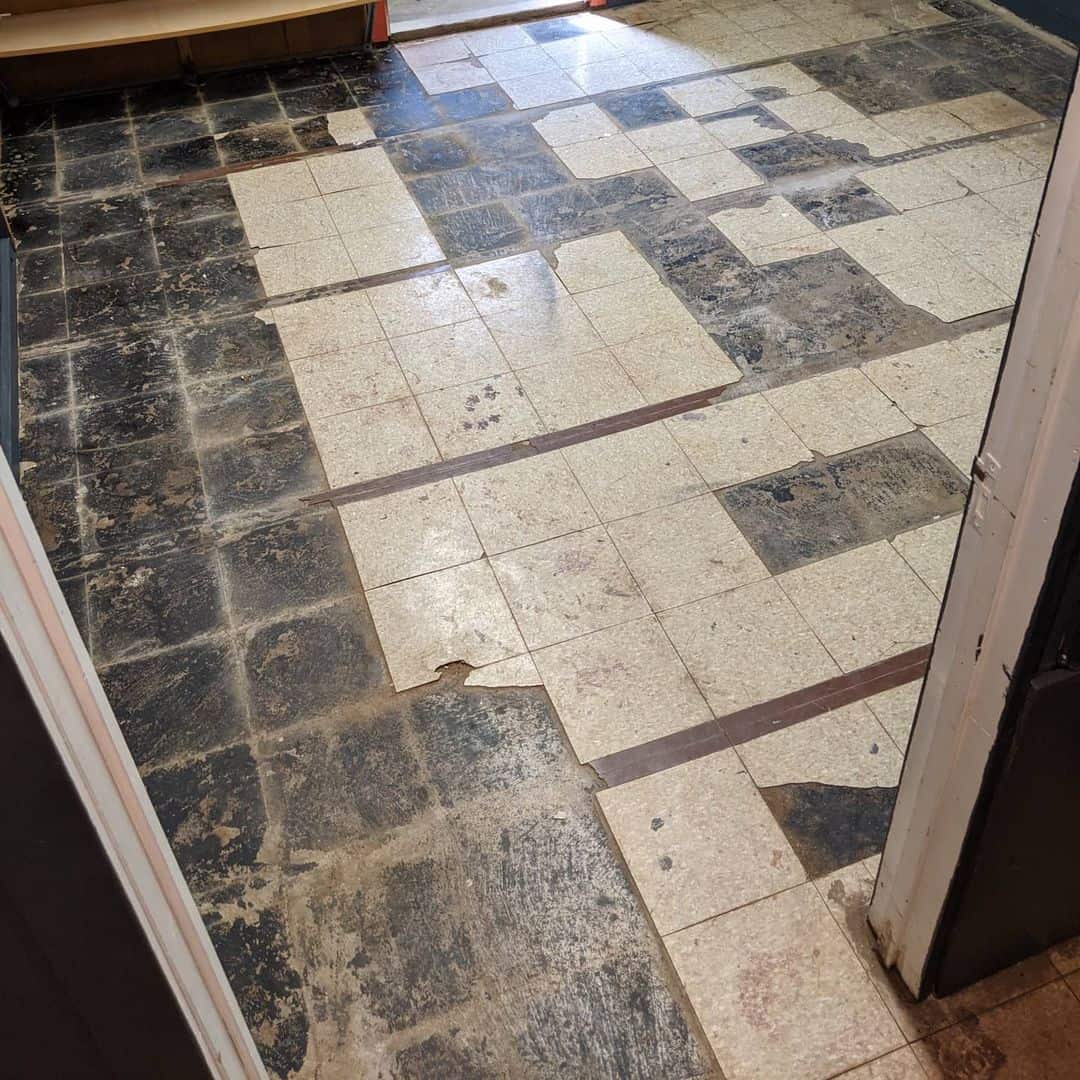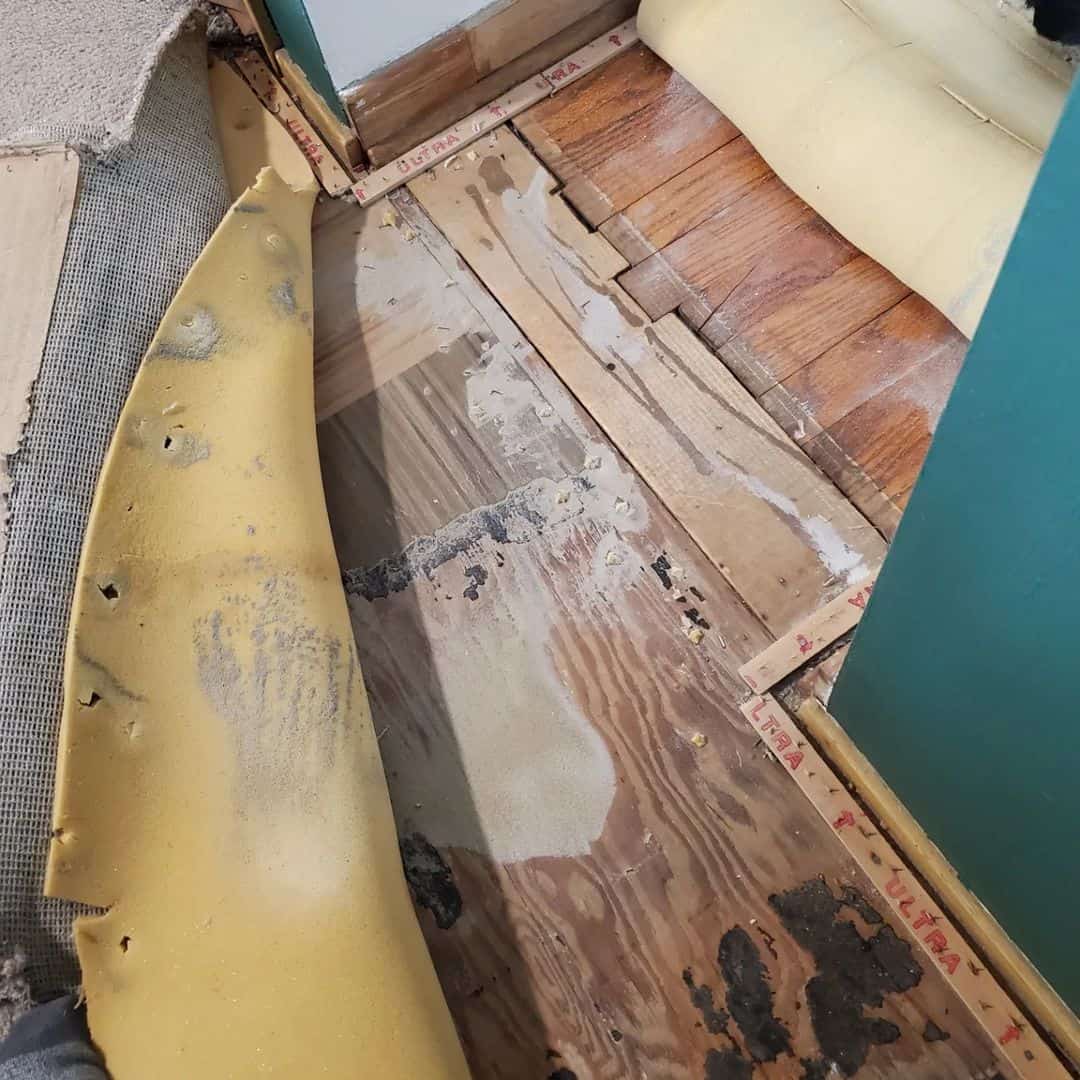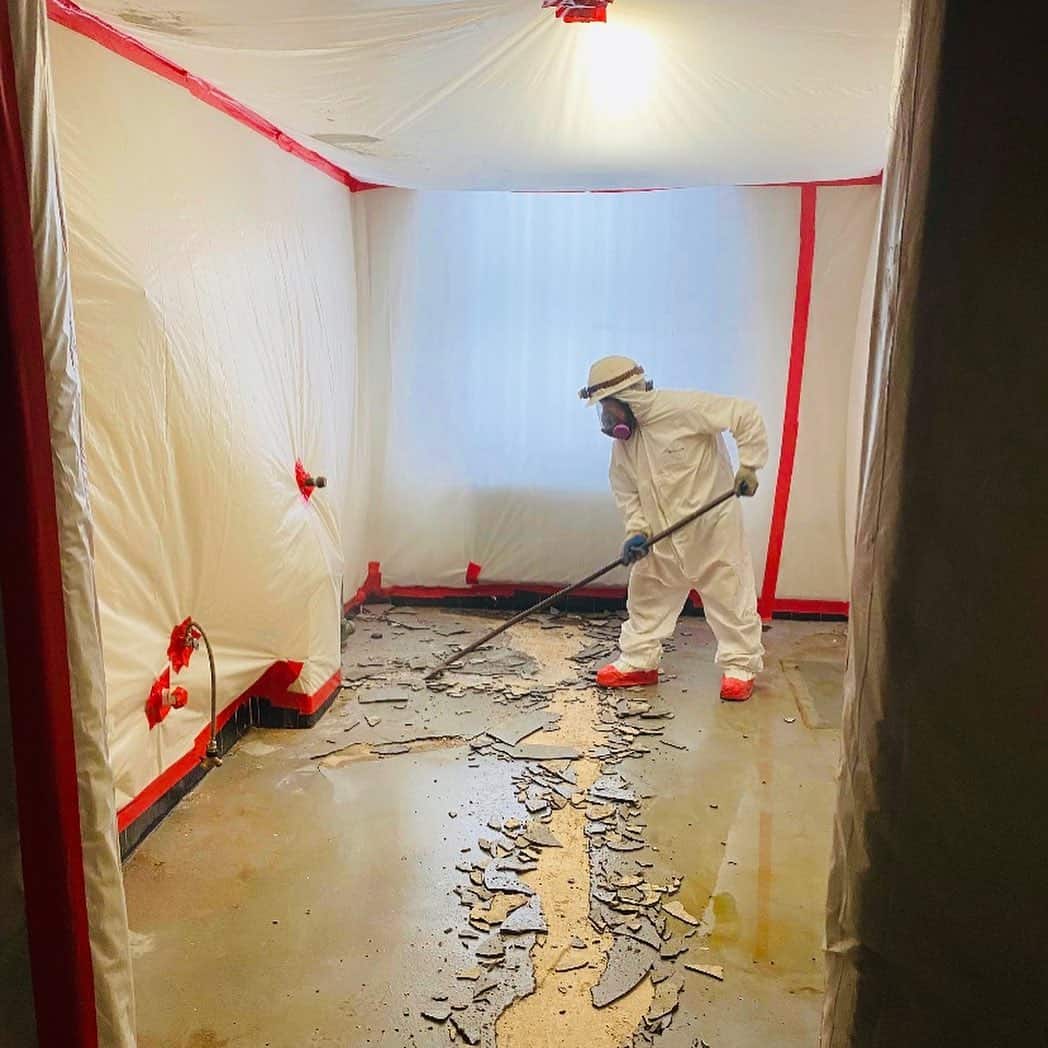Asbestos tile was a prevalent type of flooring material around the 1900s. It was chosen for its durability, low cost, insulation properties, and fire-resistant qualities. Unfortunately, it has since been identified as a carcinogen and can pose significant health risks upon exposure.
If you presume the presence of asbestos tile in your home or business, read on to learn more about what it looks like and what steps you should take.
Table of Contents
An Overview of Asbestos
Asbestos was widely used in building materials until the late 1980s when its health hazards were discovered. Asbestos comprises six deadly minerals that can induce severe ailments, such as mesothelioma (a form of cancer), lung cancer, and asbestosis. Inhalation of asbestos dust can lead to inflammation of the lungs or respiratory system issues.
In general, asbestos can be found anywhere from old homes to commercial buildings built before 1980, when asbestos was still widely used for insulation materials and fireproofing products. Asbestos is commonly found in ceiling tiles, floor tiles, textured paints, adhesives, caulking materials, and more.
Types of Asbestos Tile
The asbestos tile was available in various sizes, shapes, and colors. Most types were laid out on top of concrete or wood subflooring but could be applied directly to walls or ceilings. There were two main types of asbestos tiles: vinyl-asbestos tile (VAT) and asphalt-based asbestos tile (ABAT).
1. Vinyl-Asbestos Tile (VAT)
VAT was the most commonly used type of asbestos tile. It consists of a backing made from fibrous insulation material, and two layers of vinyl placed on top. The vinyl layers were often highly decorated, which gave it visual appeal.
2. Asphalt-Based Asbestos Tile (ABAT)
This tile is usually found in garages and other areas where moisture is likely present. The tile is made up of a backing that contains asbestos fibers and an asphalt top layer.
How Can You Tell If Tile Contains Asbestos?
It can be difficult to tell whether or not your tile contains asbestos just by looking at it. Laboratory testing kits are the only way to determine if a material is asbestos-containing.
There are specific characteristics that may indicate the presence of asbestos:
1. Tile Size
Tiles’ size and shape can often indicate that they contain asbestos. Standard sizes included 9-inch or 12-inch squares, as well as 18-inch squares. Asbestos tiles could come in other shapes and sizes, including small mosaic tiles and large sheets used for wall coverings and flooring.
The thickness of vinyl asbestos was typically either 1/16 inch, 3/32 inch, or 1/8 inch; if the tile is thicker, it may indicate asbestos content. Any tiles with worn edges should also be tested for possible asbestos presence. If you need clarification about the contents of your tiles, it is best to have them professionally tested before attempting any DIY projects.
2. Discoloration
Tile discoloration can result from various factors, but if they contain asbestos, the most common cause is oil leakage. Asphalt was one of the primary materials used to make asbestos floor tiles, and as it deteriorates over time, the asphalt’s oils can start to seep out and cause discoloration.
This discoloration will usually manifest in shades of yellow or brown and may appear patchy or spread throughout the affected area. If you notice an oily discoloration on your tiles, it could indicate that they contain asbestos and should be tested for further inspection.
3. Floor Tiles Age

Asbestos-containing tiles were primarily used between 1950 and 1980 before scientists realized their health risks. If your tile was installed during this period, it is more likely to contain asbestos.
It’s still possible for newer tiles to contain asbestos fibers, so laboratory testing should always be conducted to determine if a material is hazardous accurately.
4. Presence of Adhesive
If you notice thick, black adhesive underneath the tiles that have come off or are coming loose, this could be a sign of asbestos-containing material.
Black mastic is one of the most common materials used in construction and renovation projects that can contain asbestos fibers. This adhesive was regularly used between 1950 and 1980 to bond vinyl, asphalt, and other flooring products. If the material you are dealing with is older and has an adhesive residue, have it tested for asbestos.
5. Tile Texture
The texture of the tile can also help determine if it contains asbestos.
Asbestos vinyl tiles would feel much softer than non-asbestos tiles such as marble or granite. If you cannot identify the material by feel, look for tiny fibers embedded in the tile, as this is a telltale sign of asbestos.
6. Cracks and Damage
Cracks and damage can also indicate the presence of asbestos. If you see any cracks or crumbling in the tiles, you ought to have them tested for safety.
Asbestos materials are prone to cracking over time, which leads to the release of fine dust particles into the air that can be dangerous if inhaled.
7. Area of Home
Another factor that may help you identify asbestos-containing tiles is the area of the home or building in which they are located.
To their high moisture content, the kitchen, bathroom, and laundry areas were the most common locations for asbestos-containing tiles. Bedrooms, dining rooms, and hallways also commonly use these flooring materials.
Testing for Asbestos

If you suspect a material contains asbestos, it is essential to be professionally tested before attempting any DIY projects. Testing for asbestos can be done in two ways.
1. Air sampling
Air sampling involves collecting air samples from the affected area and testing them for airborne asbestos fibers.
2. Bulk sample collection
Bulk sample collection involves taking a physical sample of the suspected material and sending it to a laboratory for analysis.
When the sample arrives at a certified testing lab, it will be examined under a microscope to identify asbestos fibers if present. Results usually take 2-3 weeks and can help determine if asbestos-containing materials (ACMs) are in your home or building.
If ACMs are found in your home or building, contact a professional for advice on how best to proceed with removal or repair work. Asbestos removal professionals have access to specialized equipment and expertise that will ensure the safe handling of the material during the process.
Removing Asbestos-Containing Materials
If the asbestos-containing materials in your home or building are in poor condition, remove them rather than attempt to repair them.
Homeowners should only attempt to remove or repair any material suspected of containing asbestos after having the material tested and adequately handled by trained professionals.
The Environmental Protection Agency (EPA) recommends using only licensed asbestos abatement contractors for removing, repairing, or encapsulating any materials that contain more than 1% asbestos by weight.
It is essential to note that removing ACMs without following proper safety protocols can put you and others at risk of developing serious illnesses. Asbestos dust should never be inhaled, so ensure the area is well-ventilated while handling the material.
Keep the material wet while it is being handled, as this will help minimize dust particles from becoming airborne. Once the ACM has been removed, it must be disposed of properly by EPA guidelines.
Tips for Removing Asbestos

If you suspect or know that your home contains asbestos, handling the situation with care is essential. While asbestos can be a dangerous material to work around, there are ways to remove it from your home safely.
To help protect yourself, follow these tips for removing asbestos.
1. Wear Protective Clothing
Before beginning any project involving asbestos exposure, wear long pants, long-sleeved shirts, surgical masks, gloves, and eye protection at all times.
2. Contain the Work Area
Make sure to seal off the area where asbestos removal will occur so as not to spread any particles. This includes closing all the work area’s windows, doors, and vents.
3. Choose the Right Vacuum Cleaners
A regular vacuum cleaner cannot handle asbestos, so you must choose a vacuum cleaner specifically designed for such materials. HEPA filters are required for vacuuming up small particles of asbestos.
4. Dispose of Materials Properly
Once the asbestos has been removed from your property, ensure it is disposed of appropriately according to local regulations. Avoid dumping or throwing away anything containing asbestos; instead, contact an experienced waste disposal facility to handle the disposal.
How to Protect Your Family from Asbestos Exposure?
- Ensure that any renovations or construction work is done by a trained professional to handle asbestos safely.
- Keep children and pets away from areas where asbestos may be present.
- Seal all potential sources of asbestos exposure appropriately to prevent airborne particles from being inhaled.
- Consider investing in air-filtering systems for your home to reduce the chances of airborne particles from asbestos being inhaled.
- Discuss the issue with your family and educate them on the ramifications of asbestos exposure so they can take necessary precautions if it is found in your home or elsewhere.
- Don’t panic! Asbestos only becomes a health concern when its fibers are inhaled, so taking appropriate safety measures will keep you and your family safe and healthy.
Final Thoughts
Asbestos can pose serious health risks if not handled properly, so you must take all necessary precautions when dealing with this hazardous material.
By understanding where ACMs may be present in your home or building, as well as proper testing methods, removal procedures, and installation of new flooring products, you can protect yourself and others from potential harm caused by asbestos exposure.
Taking the time to educate yourself about asbestos, its appearance, and how to handle it can go a long way toward keeping your family safe from its dangerous effects.